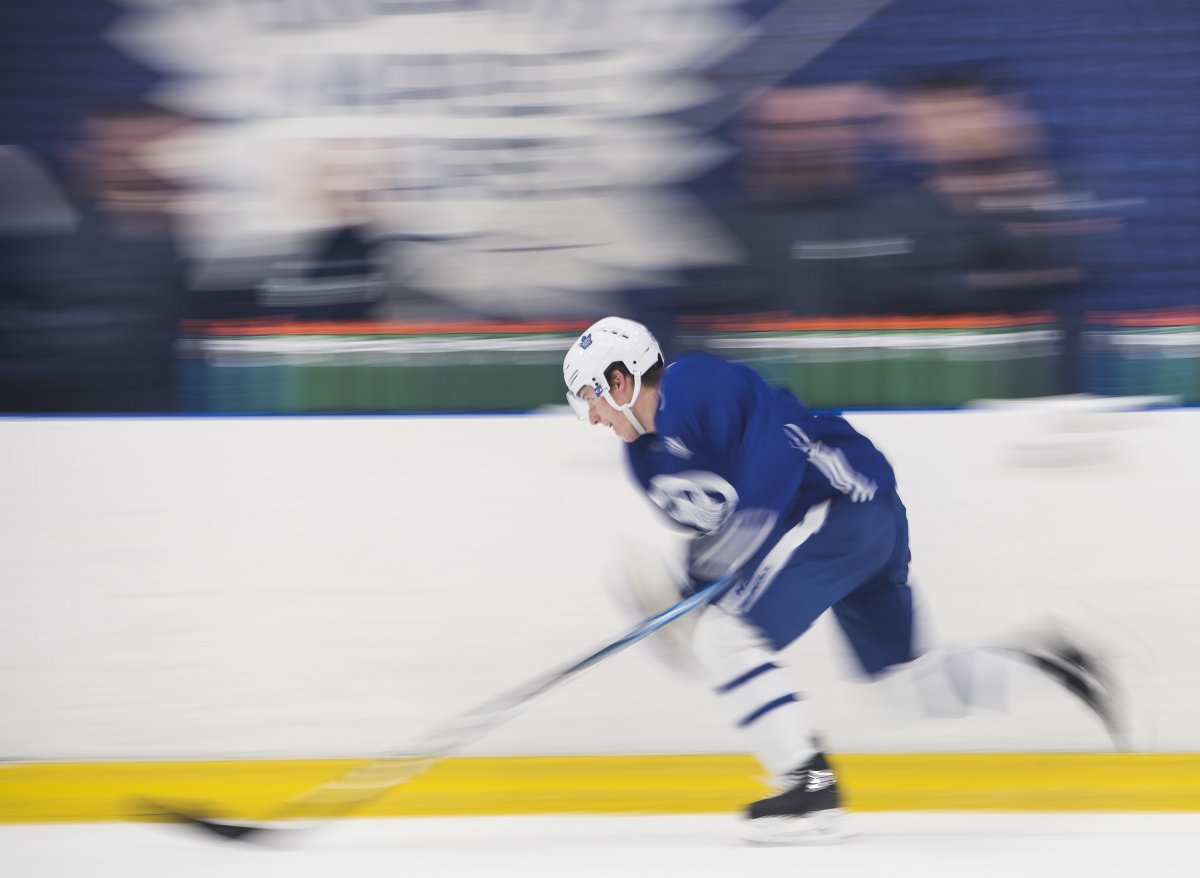This is part of Canadian Health and Wellness, a series in which Corus radio stations nationwide dig into health issues facing Canadians with the help of some of today’s most respected diet and exercise practitioners. Read the rest of the series here.

For professional figure skaters and hockey players, there is much more that goes into the sport than just practice, competitions and games on the ice. A growing number of athletes are also incorporating fitness and mental training into their off-ice regimes, which helps them give their best performance.
The driving factor behind the training, however, is to generate the greatest amount of power with each push of the blade.
For Mitch Marner of the Toronto Maple Leafs, this type of edge-work training began when he was four years old.
“Edges are the things that get you out of a lot of trouble and corners against big guys through the middle of the ice. Here, I can gain a lot of speed off that and, I think, confuse a lot of players,” Marner told Global News.
LISTEN BELOW: Canadian Health and Wellness — the importance of an edge in skating
The 22-year-old alternate captain of the Leafs — and recently announced NHL all-star — is known for his edge work, agility and ability to create space on the ice.
“There are a lot of big guys in the NHL, especially defencemen… A quick cut back can really turn a defenceman inside out,” he said. “That’s something that I always train for, is trying to do that quick cut back and cut in someone’s lane and get my time and space and freedom to make a play and see the ice.”

Edge work is a crucial component to having balance and control on the ice.
Susan Ritchie, a power skating instructor near the Toronto area who coaches both figure skaters and hockey players, said her training differs depending on the client.
“Weight over the blade, pressed into the ice at a specific angle, creates propulsion,” explained Ritchie. “With figure skating, we have to worry much more about the aesthetics of the posture, whereas with hockey, although it’s quite similar, it’s functional more than anything else.”

Ritchie said it’s becoming more mainstream for hockey players to incorporate figure-skating training into their practice.
“We call them brackets in figure skating and we call them pivot turns in hockey.”
She noted that NHL players like Connor McDavid are known for blurring the lines between the sports.
“He may not ever set foot on the ice and turn a one-foot rocker like a figure skater would, but he knows what they are and he can do them because that’s how he’s trained.”
“His agility is through figure-skating techniques,” Ritchie said.
Skaters typically have at least one dedicated edge-work session a week, but professional athletes focus on it every time they step on the ice.
Sophia Perugini began figure skating at two and a half years old in the Greater Toronto Area.
“They teach you how to get on that proper outside edge or how to properly use that inside edge… Are you going to push with your toe pick, or are you going to use the whole blade and fully use that inside to the outside edge to gain that power?”

When she was six, Perugini joined a synchronized skating team and has now been competing for just over 20 years. Her team, Nexxice, won silver at the World Junior Synchronized Skating Championships in 2010.
The sport of synchronized skating has up to 16 skaters performing together as a team, flowing as a unit in formations of circles, lines, blocks, wheels and intersections, all while performing complicated footwork and step sequences.
Higher levels perform a short program of about three minutes as well as a long program of about five minutes, which includes lifts.
“I feel like the more time and effort you put into your edges, it just becomes effortless,” Perugini said.
It also helps to improve muscle strength.
“You would be surprised the workout you can get from that,” Ritchie said of edge-work training. “It strengthens everything from head-to-toe, but particularly from the waist down, everything will be taxed.”
Fitness training will also give skaters an edge over others. Professional and semi-professional athletes are required to maintain intense fitness regimes off the ice, which may include cardio, weight and interval training, spin classes and sessions of CrossFit, pilates, ballet or yoga.
“Figure skating is very repetitive on the ice,” said Kyle Paraggua, a strength and conditioning coach based in the Toronto area who has worked with Team Canada’s world champion figure skaters Piper Gilles and Paul Poirier as well as young athletes, fitness enthusiasts and teams.
“You want to give them variability… put their body in a different position so that they get stronger in different ways.”
Paraggua also favours fitness testing when working with athletes.
“Fitness testing is super important. It gives me kind of a map to see where I have to go next,” he told Global News.

For athletes, many believe off-ice training is just as important as the on-ice component.
“You’ve got to keep your body in shape and in mint condition. I would say you’ve got to make sure that you’re always trying to be the best person out there,” said Marner.
Perugini instantly noticed a difference on the ice once she began off-ice training.
“My upper body was stronger. I was able to hold my arms up for longer. I was able to lift people on my own,” she said.
“It makes a huge difference.”
Competitive athletes will also spend time training their minds with mental work, such as meditation or visualizing a perfect performance.
“I think the best way to describe it is to get in the zone,” said Perugini. “Put away any negative thoughts that may be coming to me or any doubts that I have.”
If it’s not mental visualization, Marner says it could be an educational component such as video analysis.
“I think it’s just about trying to learn from your mistakes and trying to see what you can do better in certain plays,” he said. “For me, personally, if I think that I could have done a better play, usually on the bench we have an iPad, so usually, I try to take a look at it and see what I could have done better.”

For those who have been skating for years or are just starting to get into it, Marner has this piece of advice: “The thing I always tell people is… have joy with the game and enjoy everything you do.
“Just try and be your best.”









Comments